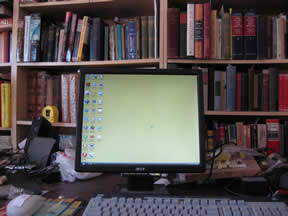 |
|||||||
Replacing a PC Power Supply
More Tech Topics:
Frame ManipulationLanguage Computations
This article gives an example of replacing a PC power supply, with pictures. But first some background material.
Of course you don't want to replace a good power supply. Because of the sequence of events that lead to my computer's death, and my own past experiences, it took me a long time to realize what the real culprit was. The computer, an AMD Athlon 64 X2 based computer from Systemax, had worked great since I got it in March 2006 [today is June 4, 2008]. I was running 64 bit Windows Vista. I added two things at once (never do that!): a second megabyte of memory and a modem (for when my satellite Internet goes down). It started powering off intermittently, so I thought it was the modem or the memory or a software problem. But eventually, eliminating all other causes, and power staying on less and less, I figured it was probably the power supply. Especially when I remembered that I ran it off a power inverter attached to my truck when we were without electricity after a bad storm last winter - I had a project that had to be in by a deadline.
Of course you have to get the right power supply to replace the old one. It should be rated for at least as many watts. Most modern desktop computers take an ATX power supply, but some proprietary computers (Dell, I've heard) have strange ones that can be tricky to replace with a standard one.
The only tool needed is a screwdriver.
Anyway, I bought a Power Up! brand 450 watt ATX power supply, which looked pretty similar to the one I was replacing. Here are pictures of my computer and the boxed power supply.
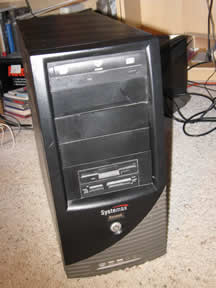
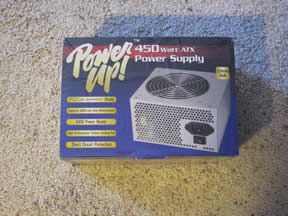
All cords have been removed from the computer, including the power cord. Always wait a few minutes after unplugging an old power supply, even if it appears dead, before proceeding, because dangerous voltage can be stored in its capacitors. Also, wear an anti-static wrist band when working inside the computer, otherwise you might fry silicon. Here's what the inside of my computer looks like (the power supply is in the upper right), with a close up of the power cabling.
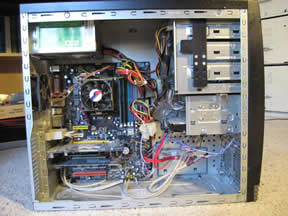
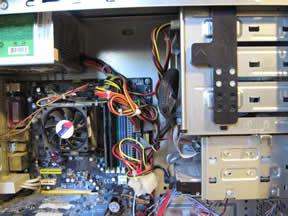
First I removed each termination of the wires from the power supply. This will vary by computer. In my case there was the main motherboard connection, a small motherboard connection, a DVD connection, hard drive connection, and card reader connection. I labeled each one, and for the main connection noted which end was up. Here are the labeled, unplugged connections:
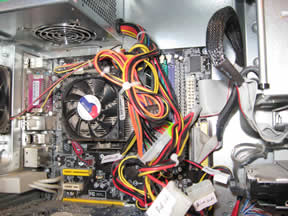
Next you have to unscrew the power supply. Mine was typical, with four screws at the back, and held by rails built into the case. After removing it I checked the labels to make sure I understood what needed to be reconnected:
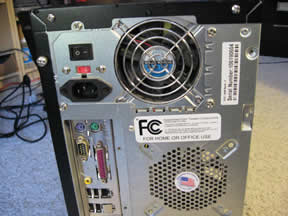
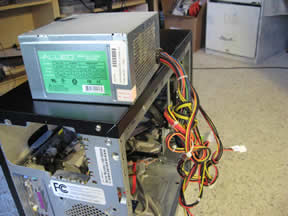
and then I unboxed the new power supply:
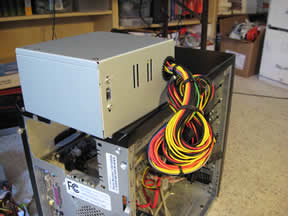
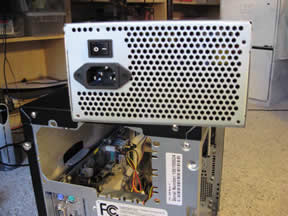
Next I unbundled and labeled the power connections (several were not needed):
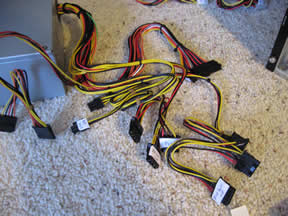
and slid it in and fastened the four screws:
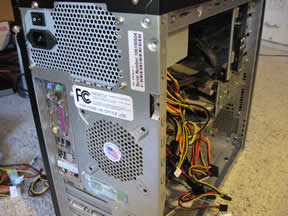
Then I carefully connected the cables. Getting one in backwards can destroy you motherboard or drives, but mostly they only fit it one way. When I was sure it was set, I tied up the cables with a twistie.
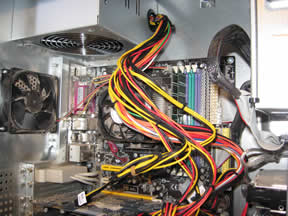
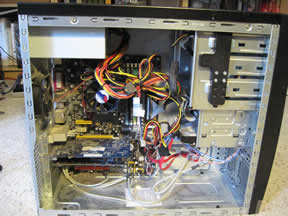
I plugged in a monitor, keyboard, and mouse, and of course the power cord. It booted right up!
